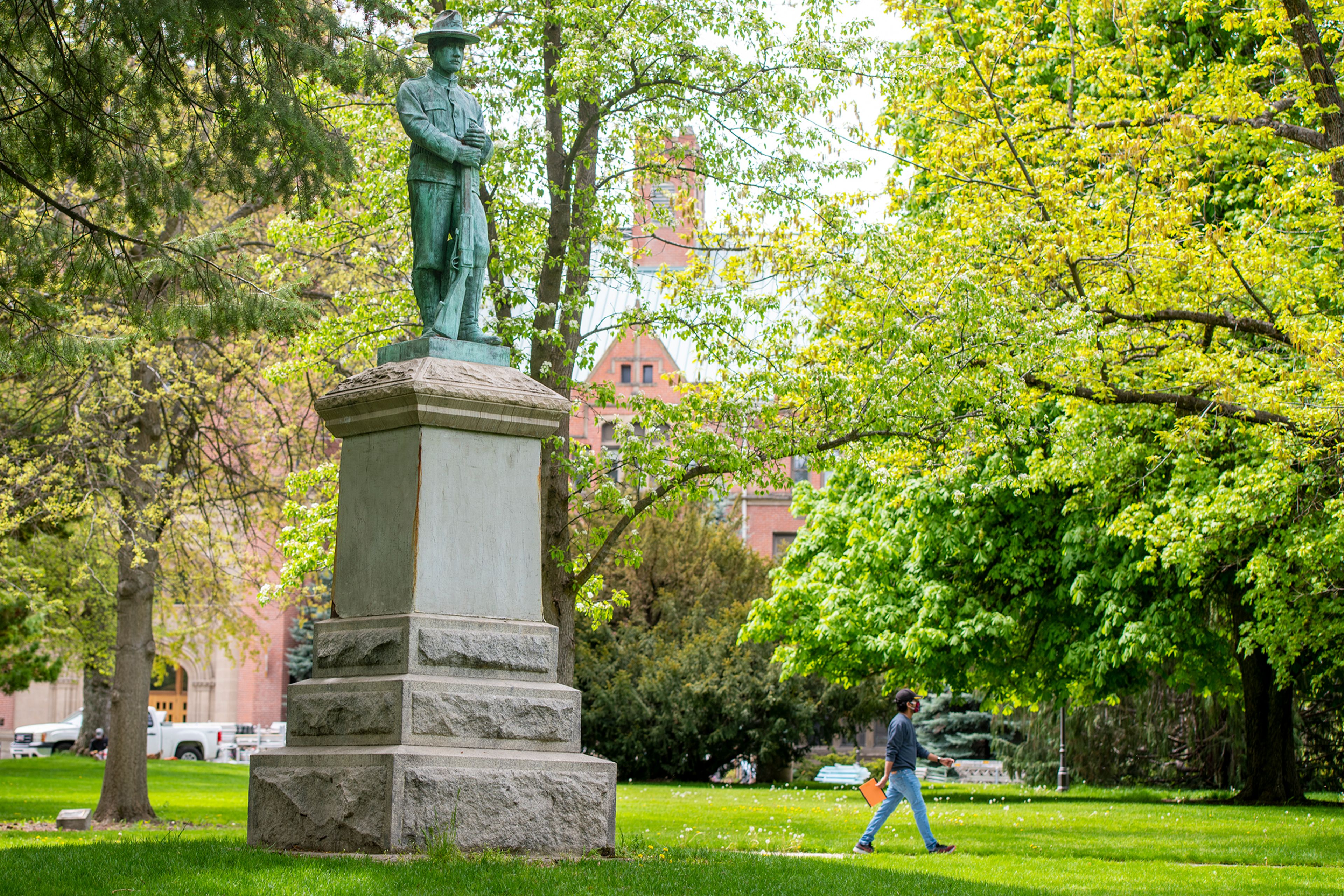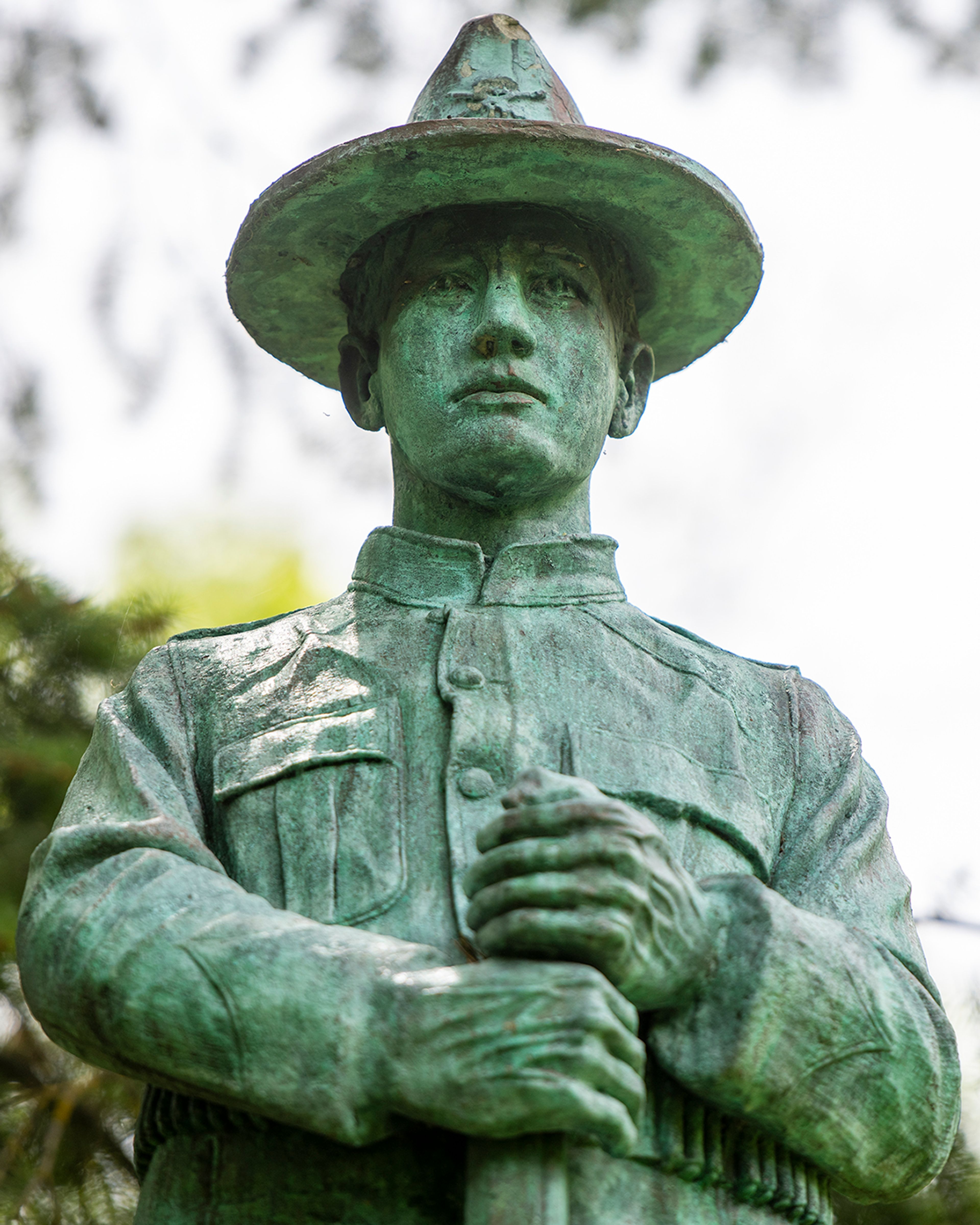A true member of the Vandal family
Former University of Idaho student Ole Hagberg served in the Spanish-American War and was honored with a statue still standing today
The term “Vandal Family” is often used to describe the shared connection between University of Idaho students, employees and alumni.
But for one man who attended the Moscow campus in the late 19th century, that term has a literal meaning.
Ole Hagberg, a European immigrant who began his undergraduate education in 1894, is legally recognized as a relative of the UI.
According to historical documents dug up by Aarika Dobbins, a management assistant in the UI College of Engineering, Hagberg was born in 1873 in Norway.
When he moved to the U.S., he came directly to Moscow, “being attracted here by the peculiarity of the name which he happened to notice on a map or time table,” according to an 1898 article from the Argonaut.
The Huntsville Weekly Democrat reported in 1900 that Hagberg quickly learned English after his arrival and worked in the mines to earn money.
“He took a year’s course at the University, attaining high rank in his studies, acquiring prominence and popularity among the students and attracting interest and confidence in his instructors,” the article read.
He was still an undergraduate when he became one of the first 35 UI students to enlist in the Spanish-American War in 1898, a group later known as the “Old Guard.”
Hagberg, at only 25 years old, died in November that year from a fever while serving in Manilla. Dobbins said he was the first student alumni to die while serving overseas in a war.
The remains of U.S. soldiers who died overseas in battle were disinterred and brought to San Francisco. They were then delivered to the nearest living relative.
Hagberg had no relatives in America. So, the university decided to step in, and UI President James MacLean petitioned the government to list the University of Idaho as Hagberg’s nearest living relative.
The government agreed and Ole’s remains were transported to Moscow and buried in the Moscow Cemetery with full military honors.
“What stood out to me was that he’s the only person, then, in history who is legally and recognized by the U.S. government as Vandal family — truly Vandal family,” Dobbins said. “And I thought that was very, very cool.”
In February 1900, the Argonaut wrote that funeral services were held at the Presbyterian church.
“The university cadets furnished the escort and pallbearers,” the Argonaut reported. “The services were without ostentation, and the remains were interred in the cemetery.”
Dobbins said the students wanted to honor Hagberg and create a memorial in his name. Faculty and students raised $500, and in 1900 the Spanish-American War Memorial Statue was placed on the Administration lawn. The statue also honors former student Paul Draper, who served in the war and later died in 1900.
It stood there when the old Administration Building burned down in 1906. It was vandalized during the 1970s by students protesting the Vietnam War and later restored by local sculptor Bud Washburn in 1984. The statue’s rededication ceremony was held in March 1985 on the Administration lawn.
It still stands on the lawn today with the soldier’s face gazing in the direction of downtown Moscow. Plaques honoring those who served in the Spanish-American war can be found in the Memorial Gym entryway.
In its 1898 article honoring Hagberg, the Argonaut wrote: “Though born in a foreign country, he knew but one flag, and beneath that shrine of liberty, beneath the gentle folds of that starry diadem, he paid the last measure of his creed, devotion to the cause of humanity.”
Kuipers can be reached at akuipers@dnews.com.









